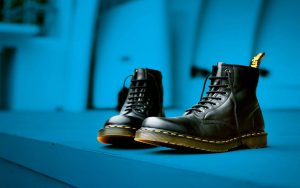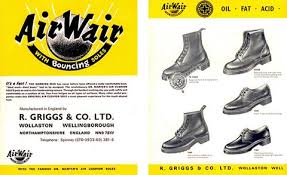Actions speak louder than words

I read the story about Doc Martens repaying the money that the UK Government had given it for furloughing some of its employees, something that it was under no obligation to do and thought again how it is actions rather than words that demonstrate whether a brand has real principles.
However it was only when a friend re-posted the story on Facebook (thanks Kate), that I remembered that I had written the story of the birth of the brand in my latest book “Inspiring Innovation”. I decided my little action could be to share it publicize the boots and the brand.
Enjoy:
Accidents will happen but then so can innovations
One measure of success for a brand is for it to acquire a nickname.
Dr. Martens doesn’t have one. It has at least four – Doc martens, Docs, DMs and Bovver boots and even the soles which are trademarked as Airwair are known colloquially as Bouncing Soles.
It is a British brand but the original inspiration came from a German orthopaedic surgeon.
Klaus Märtens was a doctor in the German army during World War II. While on leave in 1945, he went skiing in the Alps but unfortunately had an accident in which he injured his ankle. It caused a lot of pain and he found that his standard-issue army boots and even ordinary shoes were just too uncomfortable.
He had to find a solution and so started work on ways to improve the comfort provided by his boots. Inspiration came from seeing some tyres and he landed on the idea of air-padded soles.
After the war he started making and selling the boots but without much success. Luckily for him about this time he met up with an old university friend, Herbert Funck who had become an engineer.
Funck was intrigued by the new shoe design, and the two decided to go into business together. In 1947, in Seeshaupt, Germany, they started producing a revised and improved boot, using discarded rubber from old Luftwaffe planes and airfields.
The comfortable soles were a big hit with German housewives, and about 80% of sales in the first decade were to women over the age of 40.
In 1952 they opened a factory in Munich and by the end of the 50s the pair were looking for new sources of growth and started exploring opportunities to market the footwear internationally.
British shoe manufacturer R. Griggs Group Ltd. were immediately interested and quickly agreed to buy patent rights to manufacture the shoes in the United Kingdom.
Griggs decided to anglicise the name to Dr. Martens. They slightly re-shaped the heel to make them fit better and showing their flair for branding added what would be the trademark yellow stitching. They took out the British trademark on the soles as AirWair.

Launched on April Fool’s day 1960 the first Dr. Martens boots in the UK were the 1460s, a style which is still in production today. It was an eight-eyelet, oxblood-coloured, smooth leather design.
Sales quickly proved that it hadn’t been a foolish decision to buy the patent rights. The immediate appeal was amongst people who were on their feet a lot and wanted the extra comfort – people like postmen, policemen and factory workers.
However as time passed the brand started to appeal to other groups of people. In the 1960s, skinheads started to wear what they called “dms”. In the late 1970s, they became popular amongst punks, new wave musicians and a number of other youth subcultures.
In 2006, Griggs’ 1960 Dr. Martens AirWair boot was named in the list of British design icons which included Concorde, Mini, Jaguar E-Type, Aston Martin DB5, Supermarine Spitfire, Tube map, World Wide Web and the AEC Routemaster bus
SPARKPOINT: Surprisingly personal misfortune can be a source of inspiration.